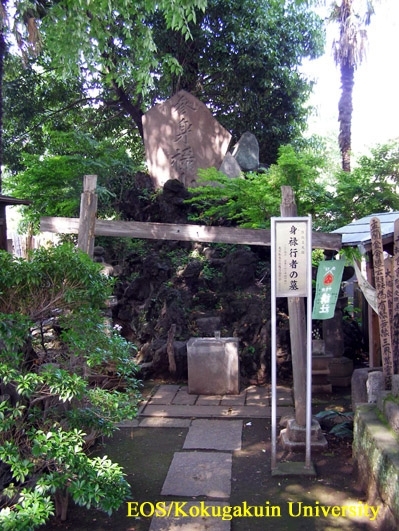- トップ
- Encyclopedia of Shinto
- Jikigyō Miroku
Encyclopedia of Shinto
| Main Menu: | |
| Links: |
詳細表示 (Complete Article)
| カテゴリー1: | 8. Schools, Groups, and Personalities |
|---|---|
| カテゴリー2: | Personalities |
| Title | Jikigyō Miroku |
| Text | (1671-1733) Leader of Fujikō, the mid-Edo-period Shinto confraternity dedicated to the Mount Fuji cult. Successor to Hasegawa Kakugyō, the confraternity's founder, and thus responsible for the later lineage of Miroku-kō confraternities. His lay name was Itō Ihei, and he was born to a peasant family on the seventeenth day of the first month of 1671 in Ichishi District of Ise Province (present-day Mie Prefecture). He moved to Edo at the age of thirteen, where he worked at a kimono fabric shop. A hometown compatriot introduced him to the cult of Mount Fuji, known as Fuji Shinkō, and in 1687 he took the religious name of Jikigyō. The following year he made a pilgrimage to the summit of Mount Fuji, where he experienced an eschatological revelation that the "renewal of the world of Maitreya" (Jp. Miroku) was beginning. In 1717 Jikigyō became the sixth leader of the Fujikō confraternity, and in 1722 added the appellation Miroku to his religious title. In addition to his business activities, he conducted an aggressive proselytizing campaign, appealing to all potential converts, regardless of who they were. Unlike the Kōsei branch of Fujikō, which made a form of magico-religious invocations (kitō) central to its system, Jikigyō's distinguishing hallmark was its focus on interior faith. Earlier in his life, Jikigyō had prophesized that he would pass away on Mount Fuji when he was sixty-eight years of age. However, when he passed away on Mount Fuji on the thirteenth day (or, according to other sources, the seventeenth or eighteenth day) of the seventh month of 1733 at the age of sixty-three, his "premature" death was explained as having occurred so that he could work more rapidly toward the salvation of the world. - Inoue Nobutaka |




